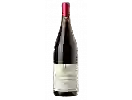
Winery Veuve AmiotRouge Demi Sec
This wine generally goes well with pork, poultry or beef.
Wine flavors and olphactive analysis
On the nose the Rouge Demi Sec of Winery Veuve Amiot in the region of Loire Valley often reveals types of flavors of chocolate, oak.
Food and wine pairings with Rouge Demi Sec
Pairings that work perfectly with Rouge Demi Sec
Original food and wine pairings with Rouge Demi Sec
The Rouge Demi Sec of Winery Veuve Amiot matches generally quite well with dishes of beef, pork or game (deer, venison) such as recipes of fast and, cantonese rice or duck sleeves in cider.
Details and technical informations about Winery Veuve Amiot's Rouge Demi Sec.
Discover the grape variety: Cabernet franc
Cabernet Franc is one of the oldest red grape varieties in Bordeaux. The Libourne region is its terroir where it develops best. The terroirs of Saint-Emilion and Fronsac allow it to mature and develop its best range of aromas. It is also the majority in many blends. The very famous Château Cheval Blanc, for example, uses 60% Cabernet Franc. The wines produced with Cabernet Franc are medium in colour with fine tannins and subtle aromas of small red fruits and spices. When blended with Merlot and Cabernet Sauvignon, it brings complexity and a bouquet of aromas to the wine. It produces fruity wines that can be drunk quite quickly, but whose great vintages can be kept for a long time. It is an earlier grape variety than Cabernet Sauvignon, which means that it is planted as far north as the Loire Valley. In Anjou, it is also used to make sweet rosé wines. Cabernet Franc is now used in some twenty countries in Europe and throughout the world.
Informations about the Winery Veuve Amiot
The Winery Veuve Amiot is one of of the world's greatest estates. It offers 32 wines for sale in the of Loire Valley to come and discover on site or to buy online.
The wine region of Loire Valley
The Loire Valley is a key wine region in western France. It follows the course of the Loire River on its Long journey through the heart of France, from the inland hills of the Auvergne to the plains of the French Atlantic coast near Nantes (Muscadet country). Important in terms of quantity and quality, the region produces large quantities (about 4 million h/l each year) of everyday wines, as well as some of France's greatest wines. Diversity is another of the region's major assets; the styles of wine produced here range from the light, tangy Muscadet to the Sweet, honeyed Bonnezeaux, the Sparkling whites of Vouvray and the juicy, Tannic reds of Chinon and Saumur.
News related to this wine
Chablis wines in the Hong Kong market by Debra MEIBURG
On December 10, 2020, four Hong Kong personalities discussed Chablis wines on a live webinar: Yang LU, Master Sommelier and Official Bourgogne Wines Ambassador, Debra MEIBURG, Master of Wine, Ivy NG, Official Bourgogne Wines Ambassador and Rebecca LEUNG, wine expert. In this minute-long clip, Debra MEIBURG discusses the position of Chablis wines in the Hong Kong market. #Chablis #PureChablis ...
The Mâcon plus appellation investigated through its geology and geography
The Bourgogne Wine Board (BIVB) invites you to enjoy this video in which Jean-Pierre Renard, Expert Instructor at the Ecole des Vins de Bourgogne, explains the topographical and geological characteristics of the appellation Mâcon plus geographical denomination . The tectonics and the very different nature of the rocks that make up the subsoil of this region explain the great variety of soils found in this part fo Bourgogne. It also explains why each wine offers a different personnality. This vid ...
Bourgogne wines : The fundamentals
Understand (or almost) everything about Bourgogne wines in less than a minute? Just do it! Our social media: Facebook: https://www.facebook.com/BourgogneWines/ Twitter: https://twitter.com/BourgogneWines/ Instagram: https://www.instagram.com/vinsdebourgogne/ LinkedIn: https://www.linkedin.com/company/bivb Find out more on our website: https://www.bourgogne-wines.com/ #BourgogneWines #Bourgogne ...
The word of the wine: Tears
Traces left by the wine on the sides of the glass when it is shaken or tilted.














